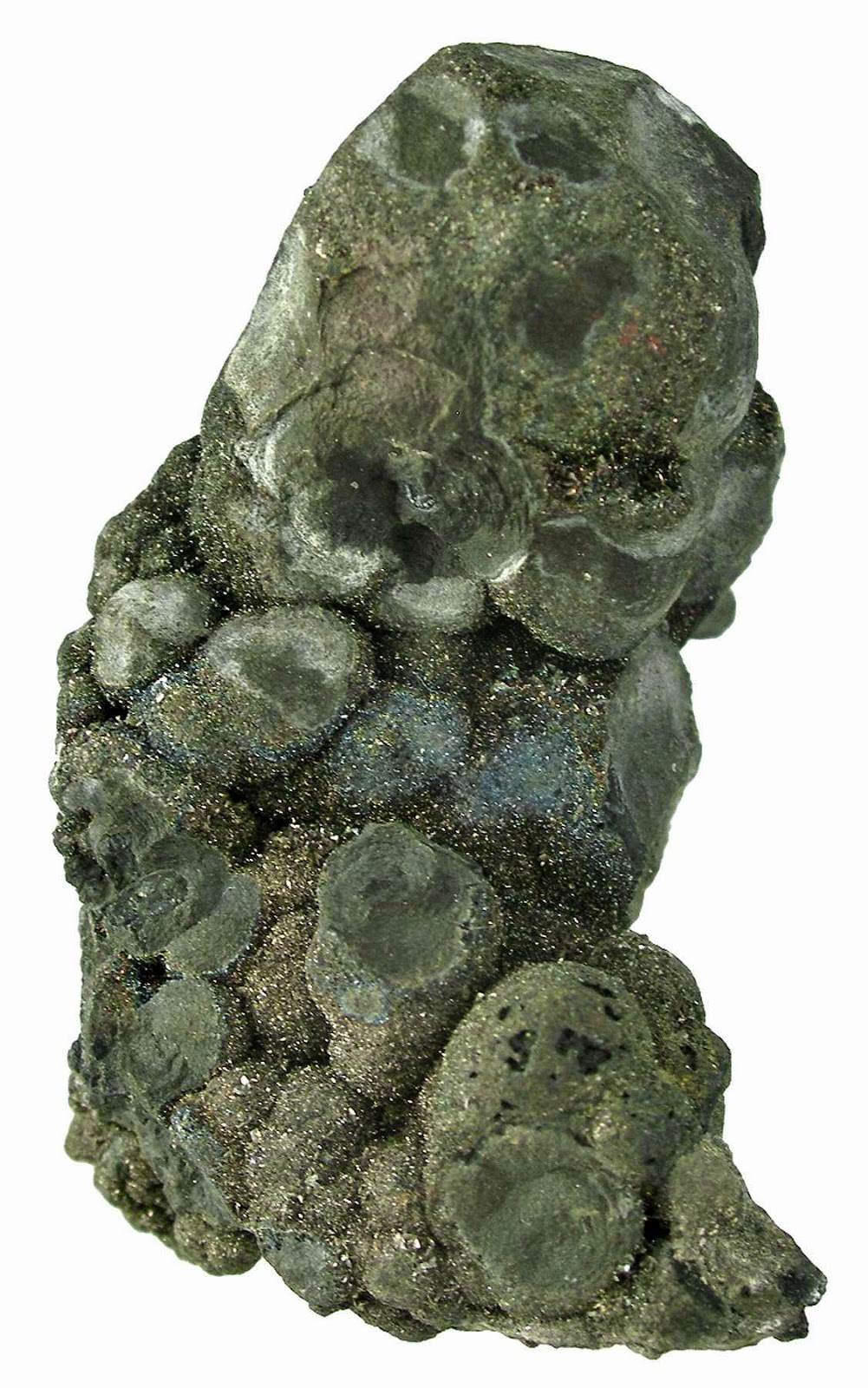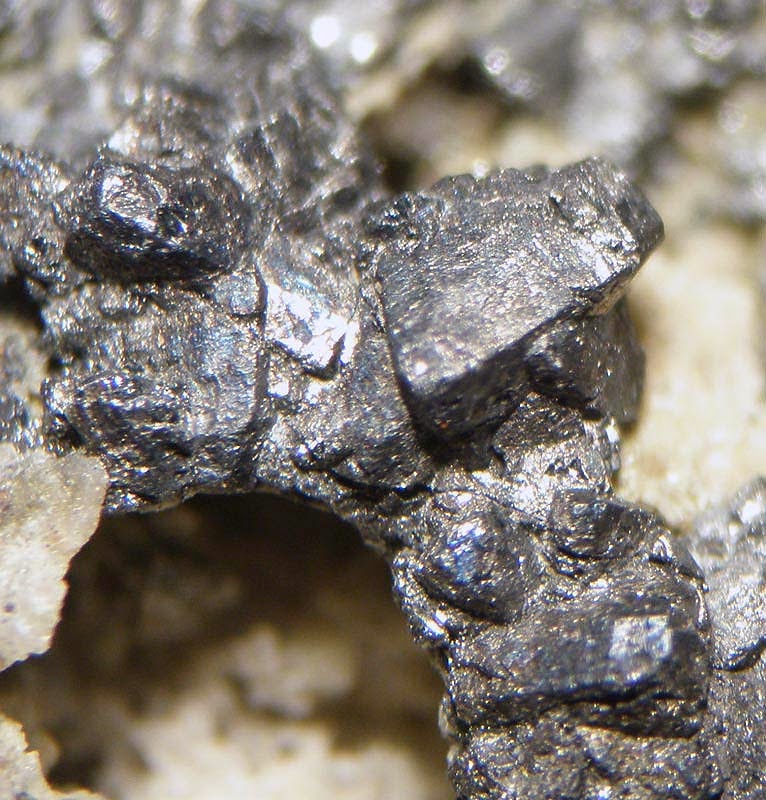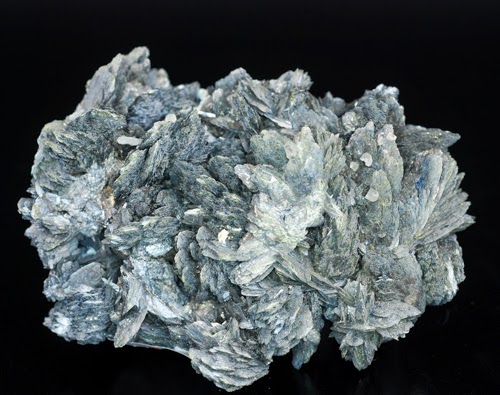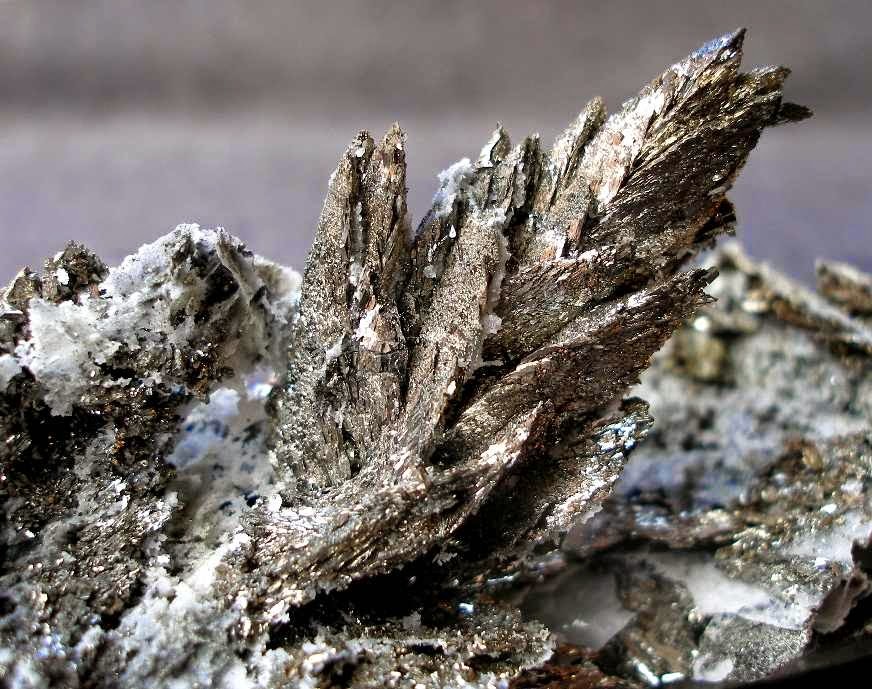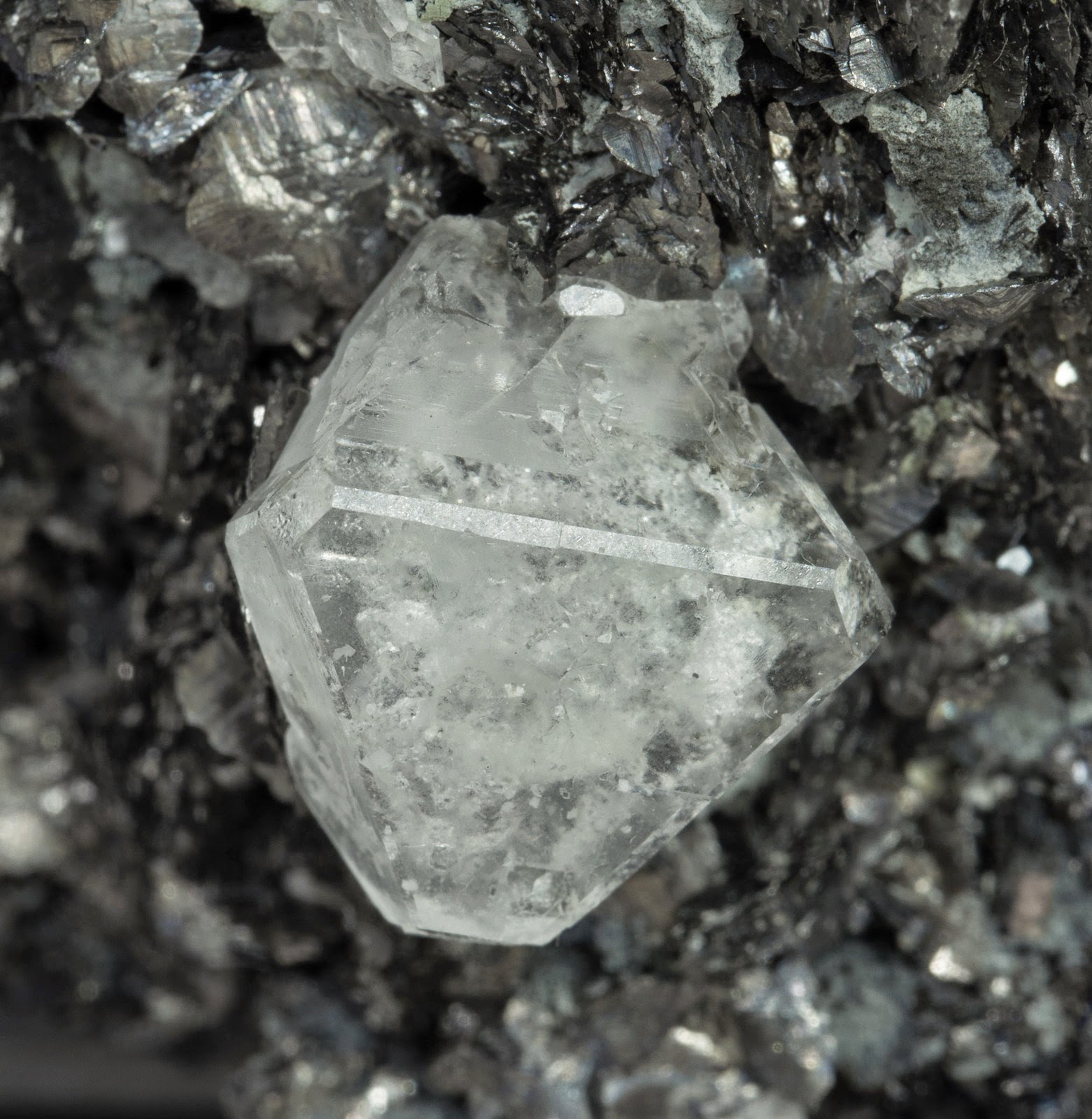
Chemical Formula: FeAs2
Locality: Lölling, Hüttenberg, Carinthia, Austria
Name Origin: Named after its locality.
Loellingite, also spelled löllingite, is an iron arsenide mineral with formula FeAs2. It is often found associated with arsenopyrite (FeAsS) from which it is hard to distinguish. Cobalt, nickel and sulfur substitute in the structure. The orthorhombic lollingite group includes the nickel iron arsenide rammelsbergite and the cobalt iron arsenide safflorite. Leucopyrite is an old synonym for loellingite.
It forms opaque silvery white orthorhombic prismatic crystals often exhibiting crystal twinning. It also occurs in anhedral masses and tarnishes on exposure to air. It has a Mohs hardness of 5.5 to 6 and a quite high specific gravity of 7.1 to 7.5. It becomes magnetic after heating.
Loellingite was first described in 1845 at the Lölling district in Carinthia, Austria, for which it was named.
It occurs in mesothermal ore deposits associated with skutterudite, native bismuth, nickeline, nickel-skutterudite, siderite and calcite. It has also been reported from pegmatites.
History
Discovery date : 1845
Town of Origin : MINE WOLFBAUER, LOLLING, HUTTENBERG, CARINTHIE
Country of Origin: AUTRICHE
Optical properties
Optical and misc. Properties: Opaque
Reflective Power: 51,7-54,2% (580)
Physical Properties
Cleavage: {001} Distinct
Color: Silvery white, Tarnish gray.
Density: 7.1 – 7.7, Average = 7.4
Diaphaneity: Opaque
Fracture: Uneven – Flat surfaces (not cleavage) fractured in an uneven pattern.
Hardness: 5 – Apatite
Luminescence: Non-fluorescent.
Luster: Metallic
Magnetism: Magnetic after heating
Streak: grayish black
Photos :
